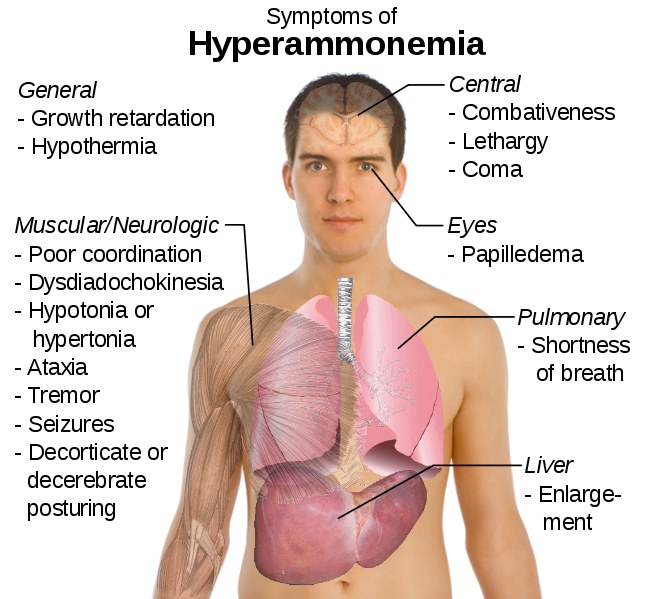92 6.41 Transamination, Deamination & Ammonia Removal as Urea
The first step in catabolizing, or breaking down, an amino acid is the removal of its amine group (-NH3). Amine groups can be transferred or removed through transamination or deamination, respectively.
Transamination
Transamination is the transfer of an amine group from an amino acid to a keto acid (amino acid without an amine group), thus creating a new amino acid and keto acid as shown below.

Keto acids and/or carbon skeletons are what remains after amino acids have had their nitrogen group removed by deamination or transamination. Transamination is used to synthesize nonessential amino acids.
Deamination
Deamination is the removal of the amine group as ammonia (NH3), as shown below.

The potential problem with deamination is that too much ammonia is toxic, causing a condition known as hyperammonemia. The symptoms of this condition are shown in the following figure.

Our body has a method to safely package ammonia in a less toxic form to be excreted. This safer compound is urea, which is produced by the liver using 2 molecules of ammonia (NH3) and 1 molecule of carbon dioxide (CO2). Most urea is then secreted from the liver and incorporated into urine in the kidney to be excreted from the body, as shown below.

References
1. http://en.wikipedia.org/wiki/File:Transaminierung.svg
2. http://en.wikipedia.org/wiki/File:DesaminierungCtoU.png
3. http://en.wikipedia.org/wiki/File:Symptoms_of_hyperammonemia.svg
4. http://commons.wikimedia.org/wiki/File:Liver.svg
5. http://upload.wikimedia.org/wikipedia/commons/b/b0/Kidney_section.jpg
6. http://en.wikipedia.org/wiki/File:Urea.png

